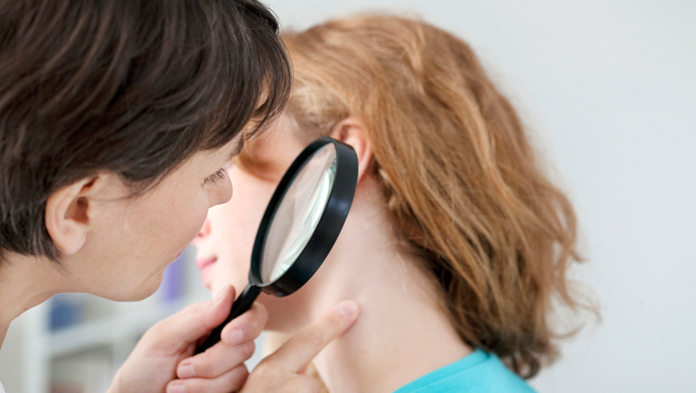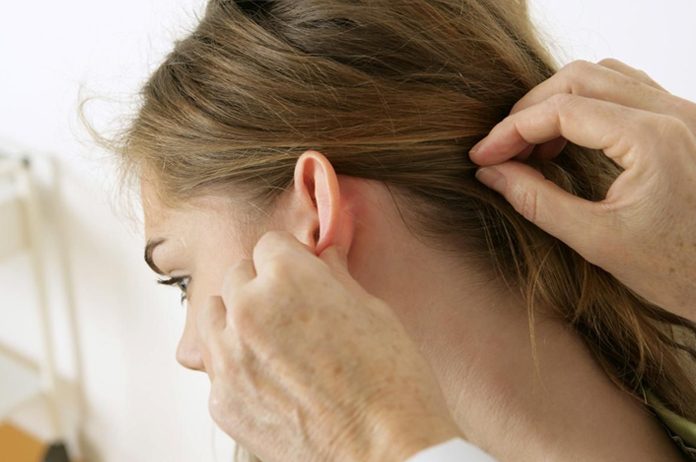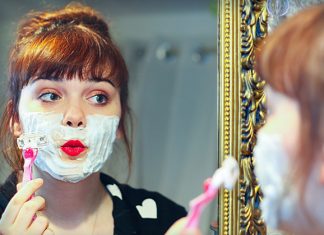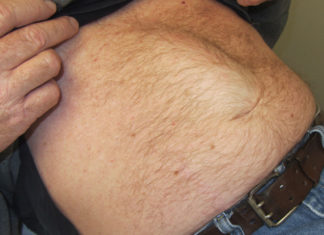Our bodies are affected by several changes almost every hour of the day. Sometimes you get to feel them, and sometimes you don’t. Abnormalities in the body are revealed by sudden discoveries of spots, rashes, lumps, growths, etc.
Lumps and other benign-looking outgrowths are often scary when discovered at first. They occur in places where you don’t usually notice or keep track of them. A lump behind the ear or cyst behind the ear and a lump on the back of the head is an immediate cause of concern because of its location. Read on to know more about these cysts and their diagnosis.
What causes lumps or cysts behind ears?
While cancer is always the first thing that comes to your mind, sometimes it’s just an ear infection gone rogue. Not all cysts are cancerous.
Abscess
Fluid or pus-filled outgrowths can be warm or painful to touch. These are the result of infections that cause certain tissues
Lipoma
This is a harmless fatty lump caused between the layers of skin. These lumps cannot be discerned with the naked eye and cannot be usually detected unless it grows in size. Small, fleshy lumps characterize this.
Infection
A lump behind the ear can also indicate other infections such as HIV, AIDS, chickenpox, measles, strep throat and mononucleosis. Bacterial infections tend to cause more swellings around the face and neck.
Sebaceous cysts
These are non-cancerous, harmless cysts that form around the sebum-producing sebaceous glands underneath the skin. They are usually painless but may cause discomfort because of the hard lump behind the ear.
Otitis media
This is yet another case of infection inside the ear that causes painful swelling. Often, untreated or built up infections cause painful swellings that are visible behind the ear.
Acne vulgaris
Acne is fairly common as a skin condition. They clog your hair follicles and grow bigger in size to cause a lump behind the ear. It’s difficult to detect cysts or lump behind the ear, but there’s always a visible and tangible head in cases of acne.
Lymphadenopathy
Lymph nodes are present under your arms, neck, behind the ear, neck, etc. When there’s an infection involving lymph nodes, they swell and result in cysts behind the
Epidermoid cyst
One of the main causes of
Tumours
When instead of self-destruction, the cells keep on multiplying, they result in tumours. While usually, tumours are benign, their malignancy can only be confirmed by doctors and expert professionals.
Mastoiditis
This is a serious form of an untreated ear infection. These infections occur on the mastoid bone, and pus-filled, painful cysts occur.
Diagnosing the problem
Self-detection by hand or through other symptoms such as pain, swelling, dizziness are important first-degree ways of detecting the problem. Sometimes, you discover these while you go to the doc’s to get something else tested.
Check if the cyst is soft, hard, pus-filled or even negligible when not looking for it. Also, please keep track of whether you have secondary symptoms, such as fever, headaches, chills, etc.
Now, having diagnosed the problem, how can you cure or control the lump behind the ear? Read on to find out.
Ways of curing cysts behind your ears
There can be quite a few ways of controlling or even curing the lump behind the ear. Not panicking and calmly feeling the cyst is the first step towards proper treatment. Unless you feel the nature of the cyst behind the ear, it’s not possible to advance towards a diagnosis.
Try out these home remedies for a first-hand treatment:
Cysts and abscesses
Warm compresses are usually more helpful and less painful than, say, popping or trying to scratch the cyst behind the
Mastoiditis
For treating this, apply a
Lymphadenopathy
Gargling with salt water or turmeric water helps to improve the situation as it involves infected lymph nodes.

Visiting the doctor and further treatment
These home remedies should be discontinued if there is no change in the situation or if your symptoms persist or have been aggravated.
Visiting a doctor within a day or two of detecting the lump behind the ear is always the most desired response and leads to lesser fatal situations in the future.
Facing difficulties while swallowing, increased pain in the hard lump behind the ear, further hardenings of the cysts, difficulties while moving your neck are some of the situations when you should be immediately consulting the doctor.
Precautionary methods and taking care
While cysts and tumours sound very tricky and scary to handle, it’s never too difficult to handle things once you get the hang of it.
Don’t delay diagnosis and administering the necessary treatment when you detect a hard lump behind the ear. Being careful while cleaning your ear or keeping regular track of changes in the body never fails to save you.
When you are self-administering medicines or treatment, remember to not scratch or pick at cysts unnecessarily. That would cause more harm than good. Once you find a lump behind the ear, be careful with how you shampoo or oil your hair. Even minor disturbances can sometimes be quite painful if you are not careful enough.
The importance of avoiding too many earphones and following a healthy enough diet to ward off external infections can never be emphasized enough.
It is also important to report to your doctor any minor or major changes that the lump behind the ear may have undergone after you started treatment.






